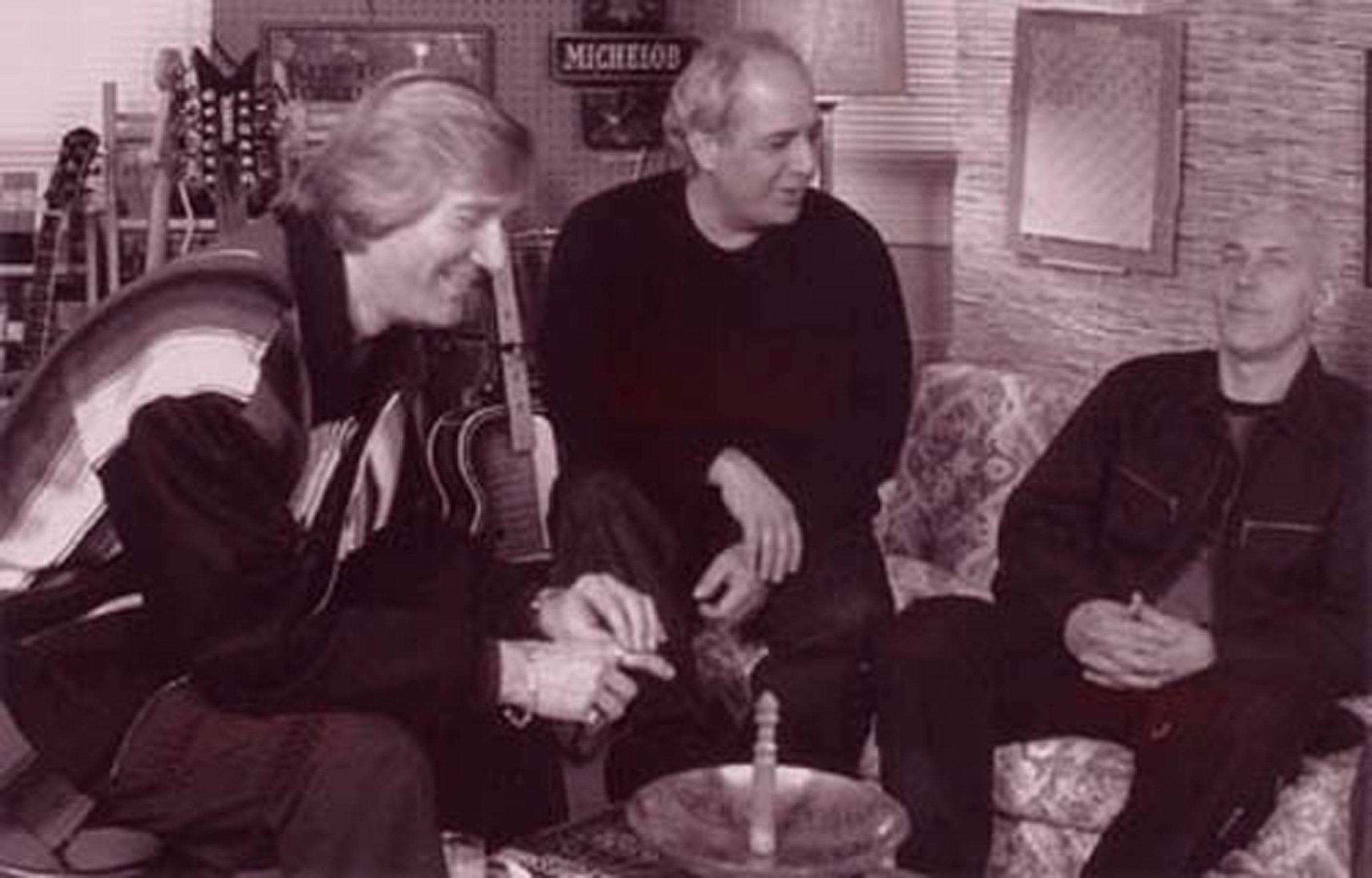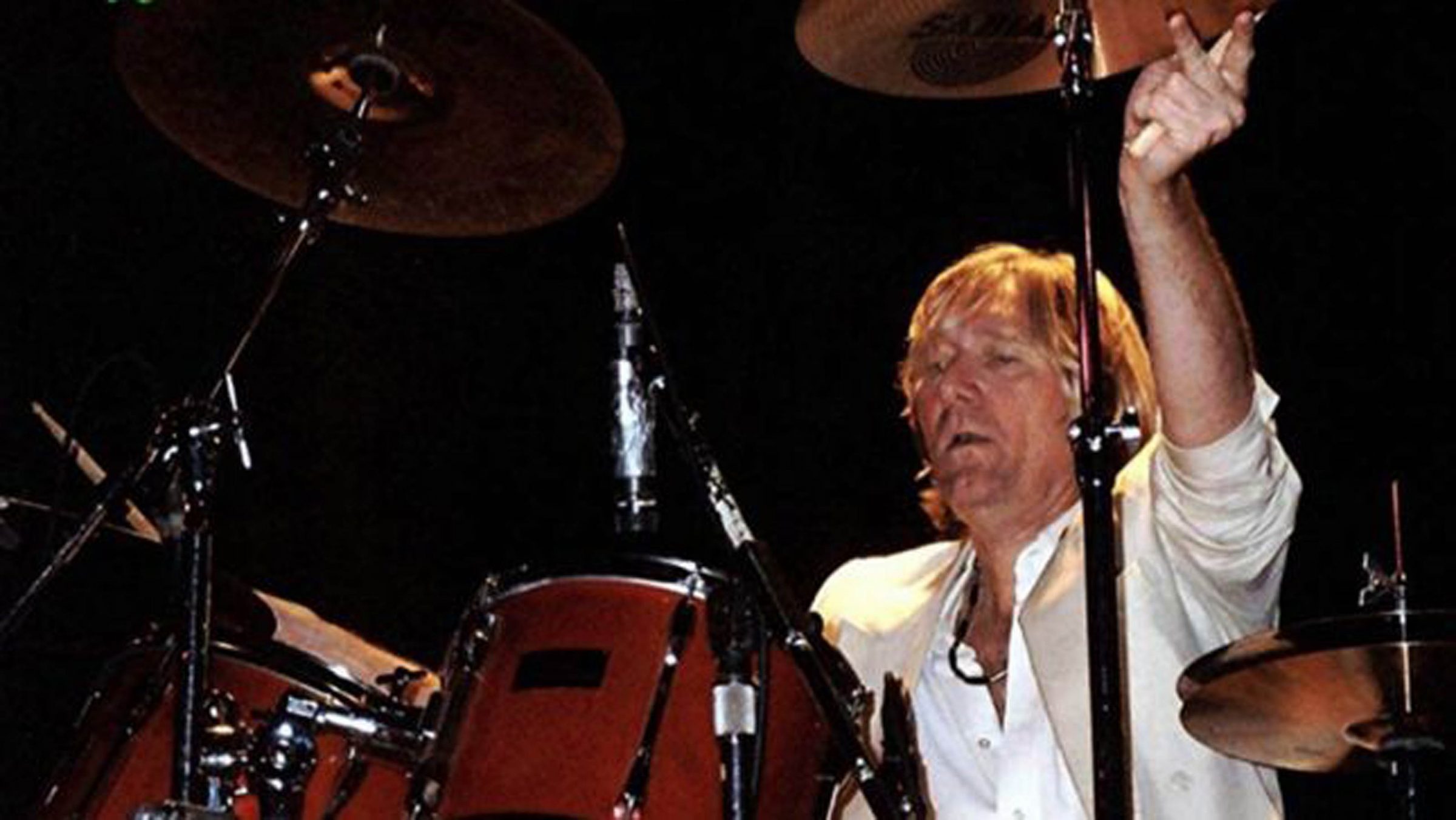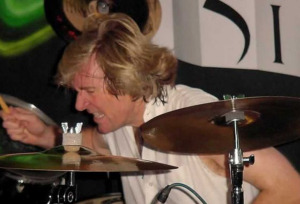(KACHINA RECORDS; 2001; 2004) A REVIEW FROM THE VAULTS

Famed Alice Cooper percussionist Neal Smith has lent his name to many projects since the demise of that storied outfit some four-and-a-half decades ago – from the sublime (Billion Dollar Babies, Bouchard Dunaway and Smith) to the ridiculous (the big noise, hair metal of Ded Ringer) to the ridiculously sublime (Plasmatics and his own 1975 solo album, PLATINUM GOD). I’m not exactly sure where this project falls; it’s kind of a “musician’s project,” with textures generally unexplored in any of Neal’s other work. There are hints of the old Cooper sound, particularly a descending riff that spirals through “Temple Mental,” a tune from Cinematik’s eponymous debut. Much of Neal’s work on the trio’s two albums involves African and tribal percussion instruments rather than the standard “rock guy” drum kit that most of us associate with the “platinum God.”
Though there are touches of the old Neal Smith sound, much of the music is very… uh… cinematic. Neal’s bandmates, bassist/vocalist Peter Catucci and guitarist/vocalist Robert Mitchell, create an almost orchestral feel, allowing the understated percussion to flow through the (mostly) instrumental material of CINEMATIK and ONE FULL MOON AWAY, rather than drive the tunes forward. Occasionally, subtlety and power mean the same thing. That is never more evident than on the beautiful instrumental, “Awake,” a song from the first album. With Peter’s minimal use of the didgeridoo and his quietly throbbing bass and Neal’s less-is-more approach (on what sounds like either a tom-tom or a small hand drum and a tambourine) on the evocative Native American percussion, Robert weaves an elegant, slightly jazz-flavored guitar over, under, and through the tune leaving you spellbound. Peter’s didgeridoo comes to the fore a little more forcefully on the rather loopy, jazzy hip-hop of “Reckon Eyes.” Other high points of the first disc are “Nude Ellie,” the somehow transcendent “African Clay,” and the doom-heavy “Even In Sleep.” Peter Hickey guests on keyboards on “Nude Ellie” and “African Clay,” the latter of which also features a vocal performance by Maximillian Catucci; Grace Loew adds cello to the tune “Grace Beach.” I know that somebody somewhere is going to call the music of CINEMATIK “New Age.” If they do (or even if it looks like they’re thinking it), smack ’em! They deserve it (plus… they won’t hit ya back cuz they’re all peaceful and at one with self and universe… or some mumbo-jumbo crap like that)!
ONE FULL MOON AWAY pretty much picks up right where CINEMATIK left off, but tends to rock a bit more (maybe due to an unsolicited “New Age” tag-line haunting the guys from the first album). “Incognito” borders on rock and roll more than just about anything else on either release, with a “JAMES BOND” kinda vibe and the trio expanding their sound to include – among other things – a sax (provided by Klyph Johnson). Robert adds a little bit of Frippertronics-style guitar sound washes through-out the disc, all to good effect. This album also features more vocal tracks and more harmony and backing vocals than the first. Plus – inadvertent or homage – there are tracks that virtually scream “Alice Cooper!” The hypnotic “Million To One” is very reminiscent of “Halo of Flies.” In a slightly less chaotic fashion, of course. With Robert and Peter splitting lead vocal duties, I’m never quite sure who’s singing what, but I must say that one of the guys has definitely picked up a stylish Joe Walsh kind of phrasing, put to good use on “Unfrozen,” among others. The Native American percussion is back on a track called “Amorak,” but the over-all sound of the track is very spooky… a kind of swirling eddy of darkness. “Euriffodes” (sound it out and you’ll get the little inside joke) is an excuse for Neal to play a standard (if smaller than usual) drum-kit and for Robert to… ROCK OUT! The track is, possibly, the guys showing everybody that Steve Howe and Yes aren’t the only people who can pull off a song like this. Other high spots include the trippy “Murder In the Moon” and the percussion heavy Middle-Eastern fusion of the final track, “Simplas Childernz.” Peter adds the violin, clay flute, and berimbau to his instrumental onslaught, while guest players help to flesh out the sound: Grace Loew returns on cello, Rob Fraboni adds shaker to the goofy “Wolfman’s Holiday,” and Klyph Johnson is all over the place with his already noted sax work, as well as the occasional bassoon.

Listening to the albums back-to-back, I’d have to give the nod to CINEMATIK on atmosphere alone, though the more up-tempo ONE FULL MOON AWAY definitely is worth obtaining, as well. It has been a while since these albums were released (they are copyrighted 2001 and 2002), and the three members have all gone on to other projects (most notably, Neal’s return to the rock arena with Joe Bouchard and Dennis Dunaway and Peter’s work on the Garrison Project album). However, the music that these three men make together is truly amazing. I, for one, am hoping for a third release from Cinematik.







